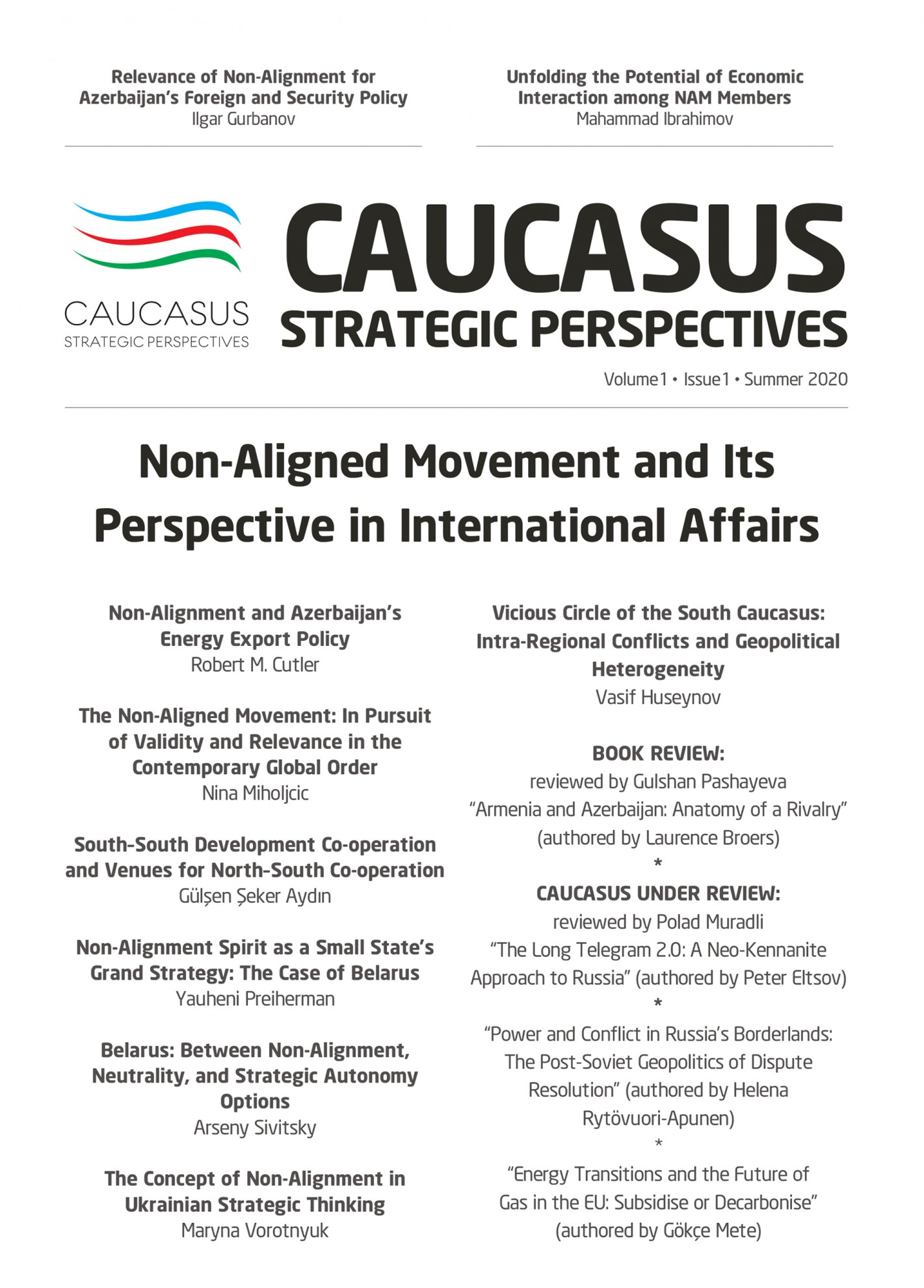Vicious Circle of the South Caucasus: Intra-Regional Conflicts and Geopolitical Heterogeneity
This article looks into the causes and consequences of the variance in the foreign policy orientation of the three countries in the South Caucasus, Armenia, Azerbaijan, and Georgia. The article discusses, as manifestations of their foreign policy orientations,Armenia’s alignment with the Russia-led Collective Security Treaty Organization (CSTO), Georgia’s aspiration to join the Euro-Atlantic military and political structures,and Azerbaijan’s commitment to a balanced approach through reinforcing its role within the Non-Aligned Movement (NAM). Tracking the evolution of the status quo to the beginning of the post-Soviet independence of the three states, the article argues that regional ethno-territorial conflicts, combined with the intervention of external great powers in this process, has served as the causal variable behind the genesis of the region’s geopolitical diversification. This situation, in turn, has aggravated the disputes between the regional states, expanded the gap between them, and significantly complicated the resolution process. Describing this process as the vicious circle of the region, the article poses the questions, what are the main characteristics of this vicious circle? And how does it affect regional peace and security? The analysis concludes that the territorial conflicts of the South Caucasus erupted from relatively similar conditions in the wake of the fall of the Soviet Union in early 1990s, but their trajectories diverged markedly owing to a wide range of factors but, in particular, the foreign policy strategies of the respective states.
Latest news
- 12/27/2024 Call for Submissions-Caucasus Strategic Perspectives, Volume 6, Issue 1, Summer 2025 678 views
Popular articles
- 07/18/2022 The Russia–Ukraine War: Perspective of Azerbaijan 4339 views
- 10/14/2020 The Non-Aligned Movement: In Pursuit of Validity and Relevance in the Contemporary Global Order 3317 views
- 10/14/2020 Vicious Circle of the South Caucasus: Intra-Regional Conflicts and Geopolitical Heterogeneity 3296 views
- 10/14/2020 Relevance of Non-Alignment for Azerbaijan’s Foreign and Security Policy 3025 views





